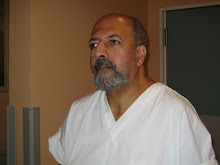The Marquee plays it again - and Hendrix is top of the bill
By Jonathan Brown
07 August 2004
For nearly three decades it was the musical A-bomb in Wardour Street, the epicentre of London's pop scene. But changing fashions, an economic downturn and a misconceived move to a designer spot in dandified Islington forced it to close.
But this autumn, the Marquee Club, which nurtured bands that include The Rolling Stones, The Who, The Jam and many more, is to reopen its doors just a short stagger from its spiritual home in Soho.
The distinctive black and white trademark and brand has been bought by the musical entrepreneur Nathan Lowry who has spent 18 months searching for an authentic mid-size venue in central London.
The Marquee will take up residence across three floors at the site of the old Home superclub in Leicester Square. Mr Lowry, from Co Down in Northern Ireland, is too young to have experienced the original Marquee, but he is confident he can turn the legend into a financially viable enterprise, maintaining the traditions of independence and originality fostered by the club since it opened in 1958. He believes the doomed move by its former owner Dave Stewart to a shopping centre in Islington broke the basic rules of musical location.
The Eurythmic had tried to take the brand upmarket, hiring a Michelin-starred chef and importing technology to bring live gigs at the club to a global audience. The Marquee was eventually put up for sale in January 2003 and placed in administration. Mr Lowry has been negotiating for months and will say only that he paid "quite a lot" for the club after a bidding war with two other parties.
Citing his own musical influences as The White Stripes and The Strokes, he says: "The Marquee has a fantastic heritage and pedigree. The last one didn't work out for a variety of reasons, mainly on location. But the club means something to everybody." In 1988, the club moved from Wardour Street to Charing Cross Road, but never really regained its atmosphere. In its heyday, it was painted matt black from ceiling to floor, its carpets glossy with spilt beer. The sweaty, seething pit of humanity its audience used to transform into when the music started, never followed it across Soho.
In the late Eighties, clubs were about raves and dancing and the Marquee eventually closed in 1996, migrating north six years later with Mr Stewart. Mr Lowry hopes the venue will become a showcase for new talent as well as a warm-up venue for major stadium acts. He plans innovations for the 900-capacity venue.
Foremost is the creation of what is being billed as the world's largest Jimi Hendrix exhibit. Hendrix's performances at the club are legendary and from September fans will be able to view more than $15m (£8m) of previously unseen footage from his concerts at Woodstock and the Isle of Wight, and browse 500 items of memorabilia.
Mr Lowry has signed up Allan North of Plum Promotions to book the bands for his new venue. Mr North has been on British music scene since 1998 when he took over the Water Rats theatre in King's Cross and London's smallest venue, the Betsey Trotwood in Farringdon.
But can Messrs Lowry and North succeed where Mr Stewart and his A-list pals failed? "We just have to make sure we get everything right," Mr Lowry says. "Ultimately the bands must believe in it as well."
BACK CATALOGUE
1958: The Marquee Club, founded by Harold Pendleton, opens as a jazz club on Oxford Street
1962: The Rolling Stones play
1964: The club moves to Wardour Street. Opening night stars Sonny Boy Williamson and The Yardbirds
1966: David Bowie, right, holds auditions at the venue for his band
1967: Jimi Hendrix hits the scene
1976: Sex Pistols perform their first public London date
1980: Duran Duran play
1988: The club moves to Charing Cross Road
1996: The Marquee Club closes.
2002: It reopens in Islington
2004: The club is due to relocate to Leicester Square
© 2004 Independent Digital (UK) Ltd
Inscription à :
Publier les commentaires (Atom)



0 comments:
Enregistrer un commentaire